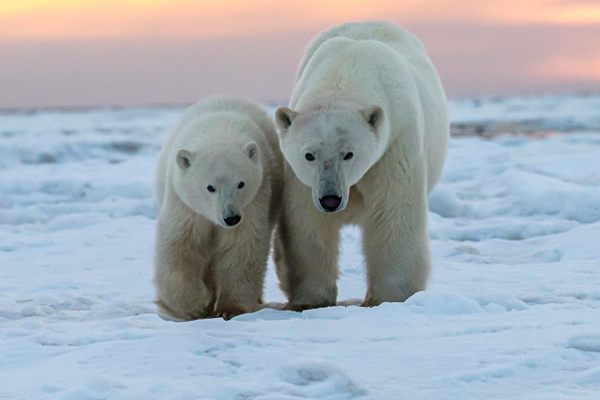Snow Leopards Are Finally No Longer Listed as Endangered
Conservation efforts and correcting an estimation error mean the elusive cats are now considered vulnerable.

Snow leopards have been a symbol of endangered species for years, and have made memorable appearances in the Planet Earth series and other nature documentaries, and a memorable non-appearance in Peter Matthiessen’s National Book Award–winning The Snow Leopard, about the efforts of biologist George Schaller. But the enigmatic cats are no longer quite as in trouble as they used to be. The International Union for the Conservation of Nature (IUCN) now lists the snow leopard as “vulnerable,” a cautious step up from “endangered.” They’re still at risk of extinction, the organization says, but conservation efforts appear to be slowing the decline of the secretive species.
The roughly 4,000 mature adult snow leopards alive today are found in mountains ranges, such as the Himalayas and the Hindu Kush, across 12 Asian countries, from Afghanistan to Uzbekistan. Biologists are concerned that the snow leopard’s extensive range—about a million square miles—makes it difficult for adults to find one another to breed. The cats also face significant risk from poaching for their thick fur, and from killing as retaliation for livestock deaths that some farmers blame, correctly or not, on them. Their common prey species are also declining as climate change and human development destroy native grasslands. The IUCN estimates that the snow leopard population will still decline by at least 10 percent over the next three generations, or about 23 years. But this is much slower than previous estimates, and the IUCN chalks that up to conservation programs.
In fact, the IUCN says the snow leopard actually should have been listed as vulnerable back in 2008. That was the last time the population estimates were reviewed by the conservation organization, and a lower estimate was accidentally used. “The revised estimate of the number of mature individuals addressed the earlier mistake, in combination with new information, and the change from [Endangered] to [Vulnerable] is therefore a non-genuine change,” the IUCN notes in their explanation. But conservation groups such as the Wildlife Conservation Society and Panthera still praise the change. It’s a sign that conservation programs work, and hopefully means we’ll get more glimpses of the glorious cats in the future.
























Follow us on Twitter to get the latest on the world's hidden wonders.
Like us on Facebook to get the latest on the world's hidden wonders.
Follow us on Twitter Like us on Facebook